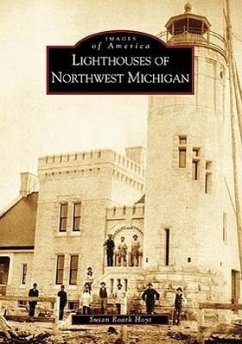After the first settlers reached northwestern Michigan, the region's immense pine forests were quickly cultivated into a thriving lumber industry. Coastal towns sprang up to support sawmills, and soon lumber schooners arrived to carry large loads of timber to ports across Lake Michigan. Their journeys were not without dangers, however. Rudimentary harbors made docking and loading hazardous while shoals and reefs, hidden beneath the water's surface, threatened to ravage the unsuspecting vessels. The need for lighthouses to mark these dangerous waters and harbor entrances was crucial to prevent the loss of lives and valuable cargo.








